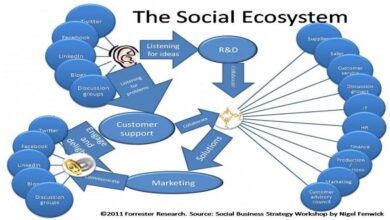Run a Social Business Social – Technology and Business Decisions

Create a Social Business
Part I of this book started with the engagement processes and the ways in which interaction and participation with social content can connect your audience with your brand (for better or for worse!). Built into the engagement process is a recognition of the new role of the customer, now much more of a participant in the marketplace and increasingly in the businesses and organizations that serve it.
The final foundational element of Part I—the social business ecosystem and its collaborative processes— exposed the collective knowledge of the Social Web and showed you how to use it in building, running, and evolving your business or organization. Collaboration between the business as a whole and its customers is the hallmark of a social business.
Collaboration in the context of social business means several things. First, it means working together, which is pretty obvious. Less obvious is who is working together. Social business implies a collaborative process not only between the business and its customers, which is tough enough, but also within the business itself—across “silos”—and between individual customers. Using the combination of conversations and active listening to guide your business planning process is a logical—but deceptively simple—approach to social business. M
The Innovation Cycle
The combination of social-media-based marketing and the application of Social CRM is powerful. Connecting customer intelligence and what is learned through active listening deeply into your business results in a customer-driven innovation cycle. Driving your business or organization according to your business objectives is always your end goal. In combination with an understanding of your audience, your business objectives are what dictate the specific actions you need to take. The use of social technologies to create a presence for your brand on the Social Web—whether though a smart application that a community finds useful or a space of your own built around your customer’s lifestyles—creates a durable, relevant connection to the Social Web. Social CRM is the complementary connection for your business: Social CRM tools like ideation platforms and support communities encourage customers to provide insights, thoughts, and ideas on how you can better serve them. This is precisely the information you need to succeed over the long term. Feel free to visit to learn more about – Gramhir
Understand the Conversations That Matter
Listening to the conversations in your marketplace is the starting point in becoming a business that deeply integrates customer input. The application of more rigorous analytics to these conversations yields clues as to how an organization might use this input to improve a product or service. It also reveals why the highly recommended cross functional work team approach to managing the Social Web is so essential.
Listening is an intuitively sensible starting point in a social business program and is largely risk-free. Unless you make it known otherwise, no one knows you’re listening except you! As a further motivator, your customers and stakeholders will almost surely recognize when you are not listening. If you’ve ever hollered for help in an empty room, you know how obvious it is—and what it feels like—when no one is listening.
Last word
Finally, I got into the Operations issues. Designing a process that is supposed to delight customers and actually delighting them are two different things.





